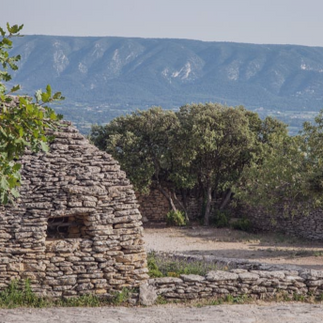North of the Luberon: Abbey of Sénanque - Gordes - Roussillon (ocher trail)
- Simon LANDRY
.jpg/v1/fill/w_320,h_320/file.jpg)
- Aug 5, 2023
- 3 min read

I suggest an itinerary colorful in the north of the Luberon. If you go there between June 15 and July 15, you will have the chance to see the flowering lavender fields. I advise you to go there the last weekend of June, from July tourists arrive in droves.
The route passes through the Abbaye de Sénanque, a Cistercian monastery from 1148 still in operation in the middle of lavender, then through the village by Gordes, world famous and ranked as one of the most beautiful villages in France, and finally by the village of Roussillon, known for its ocher cliffs and colorful streets.
Stage 1 : Sénanque Abbey

Nestled in the heart of the Luberon in a breathtaking landscape, is the Abbey of Sénanque. This majestic building is one of the most emblematic treasures of the Luberon. Its sober and austere look blends perfectly with the surrounding landscape, made up of lavender fields and green hills. The abbey is built with local stones, which gives it a perfect harmony with its natural environment.

Visiting Sénanque Abbey is an opportunity to immerse yourself in the millennial history of this sacred place, to contemplate its architectural beauty and to feel the inner peace that gets out of it. Whether you are a believer, it is a unique place where the spirit escapes. I advise you to book online here, places are limited.
Step 2: Gordes and the village of the Bories

A 10-minute drive from the abbey is the village of Gordes. The limestone houses of Gordes top a hill 340 m above sea level, dominating the entire landscape of the Luberon. I advise you to stroll through the alleys in search of exceptional panoramas and the Saint Firmin church. If you want to have lunch, I advise you to go to The Outsider, very good and placed in an idyllic setting under an exposed stone vault.
4km from Gordes, if you have time, visit the Bories village , created in the 17th century, testifies to an art of building and a know-how that has now disappeared: the superposition of stones. Isolated or grouped together in a hamlet, these small round huts built of stone which served as refuge for shepherds and shelters for peasants are typical of temporary housing. There are nearly 400 bories in the territory of Gordes.
Stage 3: Roussillon and the ocher path

I suggest you spend the afternoon in one of the most unusual villages in the Luberon, Roussillon. Located in the heart of a vast ocher deposit, the village of Roussillon is world famous for its ocher quarries and its magnificent cliffs. From golden yellow to the darkest purple, through all shades of orange, pink, red and carmine, the infinite palette of ocher makes the site and the landscapes of Roussillon absolutely magical.
The name of the village is derived from the Latin word for red, due to the reddish color of the local ochre. Roussillon was once an important production center for ochre, used in painting and construction

A little lesson on ocher is in order. It is a natural mineral powder, usually composed of iron hydroxide. It comes in several colors, ranging from straw yellow to bright red, through brown and orange. Ocher has been used as a natural pigment since prehistoric times: traces of it can be found in caves adorned with parietal paintings dating back more than 40,000 years. It was also used as a colorant in the manufacture of pottery and ceramics. It is believed that red ocher was particularly valued because it was associated with the heat of fire and the power of blood. Today, ocher continues to be used as a pigment in many fields, including painting, architecture, and interior design.

Don't confuse the ocher path with the colorado provençal of Rustrel, also pretty to visit. The ocher trail is well located in the village of Roussilon. Two courses are offered, one of 30 minutes and another of 50 minutes. I advise you to take the latter, the trail is easy for all and offers incredible landscapes. The price is €3.50 per person.
If you want to discover all the uses of ocher pigments, visit the Conservatory of pigments and ochres , 2 km from the center of Roussillon is very complementary.










Comments